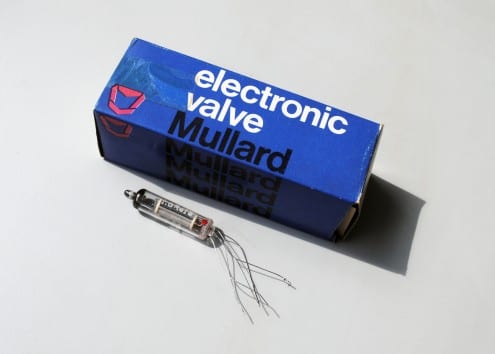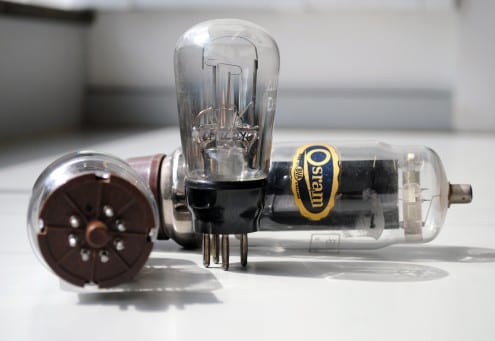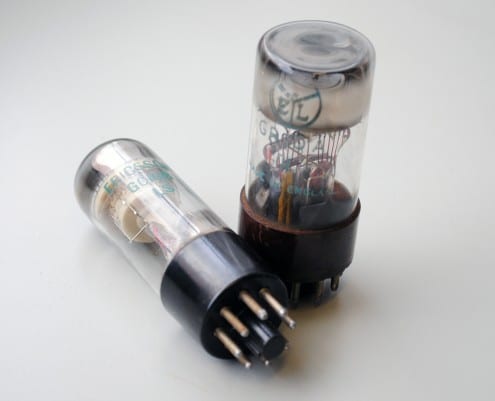Semiconductors are the basis of almost all the electronics we are used to today. Transistors are tiny switches (often microscopic) which govern how electricity flows through a device, thanks to their variable electrical conductivity. Putting many transistors in sequence means the flow of electrons through the circuit can begin to follow logical rules and make calculations – the basis of all computing. Even small devices like smartphones can today contain over a billion transistors squeezed onto the tiny chips inside them.
But electronics existed before semiconductors. The transistor was invented in the late 1940s, and only became widely used in the mid 1950s, a decade after the invention of electronic computers.
Early electronic devices, including the first computers such as Colossus and ENIAC, relied instead on thermionic valves.

A small electronic valve manufactured by Mullard. (This is the same Mullard that endowed UCL’s Mullard Space Science Laboratory). Photo: O. Usher (UCL MAPS)
Dating back to the early 20th century, valves can carry out the same functions as semiconductors do today, acting as switches and diodes. But the principles they work on are totally different – instead of exploiting the quantum properties of semiconductors, valves use brute force: glowing hot filaments that flood the valve with electrons.
This means they are extremely energy-inefficient – the ENIAC computer, with just under 18,000 valves (compare this to over a billion transistors in an iPhone) drew 150 kilowatts of power. A typical oven uses around 2 kW, a modern laptop computer uses less than 0.1 kW.
This high power consumption also means that valves look a lot like another device with a glowing filament, appalling energy efficiency and vast production of waste heat: the filament light bulb. (Like old-style light bulbs, valves also regularly burn out and need to be replaced.)

A selection of larger thermionic valves found in UCL Chemistry. Photo: O. Usher (UCL MAPS)
Valves were widely used for electronic applications in university labs until their relatively sudden obsolescence in the 1950s left unused stocks in store rooms. They still occasionally turn up when cupboards are cleared out – including a large haul of several crates of mint-condition valves recently found in UCL’s Department of Chemistry, pictured here. These are of little use for research today, but they are of great historical interest, not least for restoring and repairing old electronic devices.

Dekatrons (counting tubes) were widely used in early computers including the Harwell Dekatron Computer, which is now at the National Museum of Computing.
For this reason, the valves have been donated to the National Museum of Computing at Bletchley Park.
Links
High resolution images

 Close
Close







